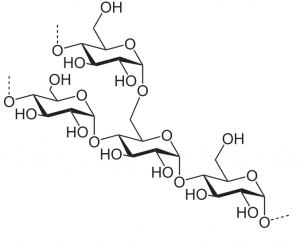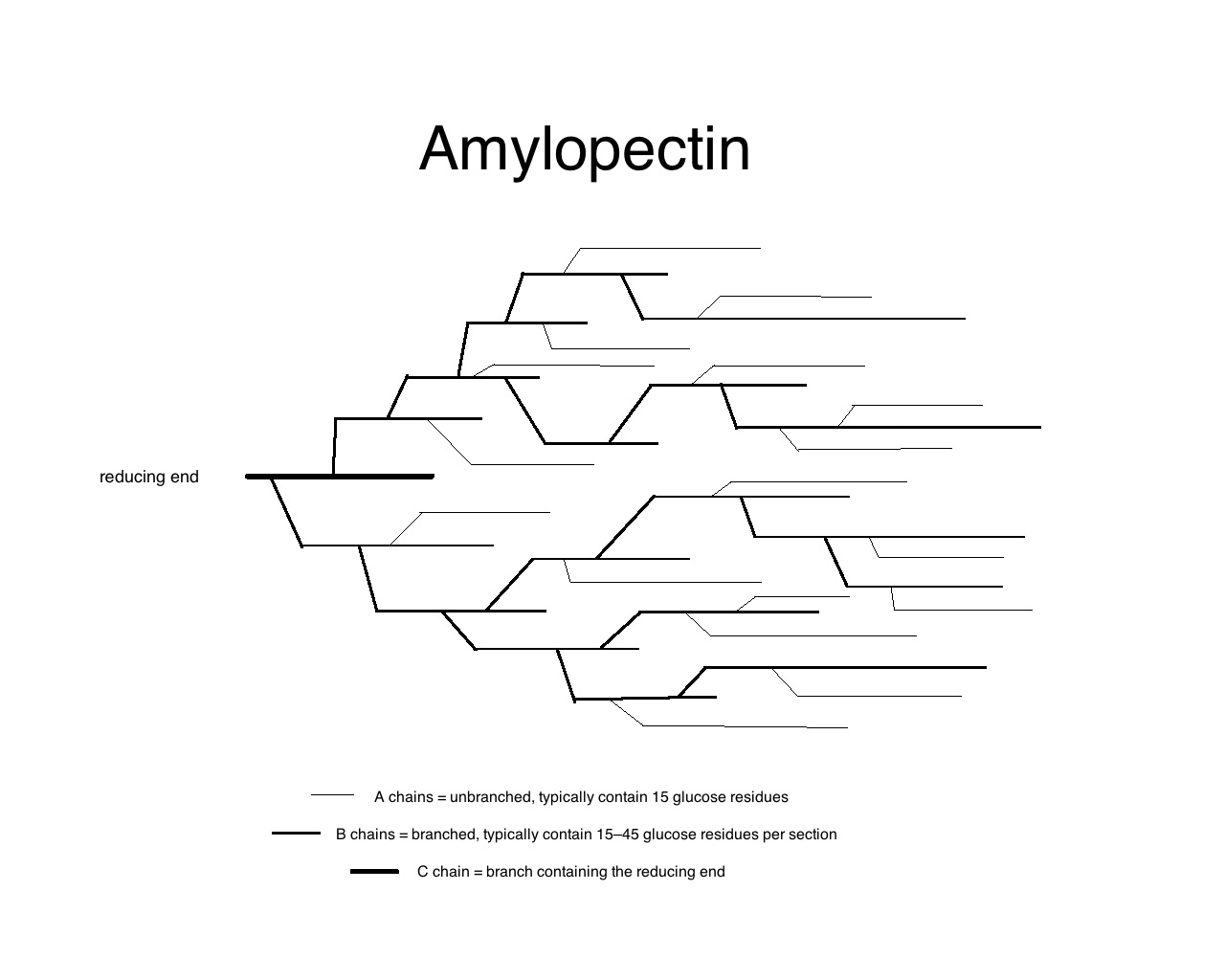
A branch point within a molecule of amylopectin. Three glucose residues linked 1 –> 4 with the top one branching off with a 1 — > 6 linkage.
It’s Starch Week on Beer and Wine Journal, and today’s topic is amylopectin. Amylopectin is one of the two components of starch, the other being amylose, which was covered on Tuesday.
Like Amylose, It Is Made of Glucose
Like amylose, amylopectin is made up of subunits of glucose. However, unlike amylose, amylopectin is heavily branched. The straight chains within amylopectin are linked via alpha 1 —> 4 linkages, as in amylose. At the branch points, however, carbon 1 on one glucose is linked to carbon 6 on another. This is called an alpha 1 —> 6 linkage. The glucose residue linked to via carbon six also is linked to other glucose residues at carbons 1 and 4. In amylopectin from barley starch, branch points typically occur once every 20 to 25 subunits. (In glycogen, a very similar molecule found in animals, branch points occur every 8 or so residues.)

Glucose, with the carbons numbered. Straight chains form from carbons 1 and 4. Branches link to carbon 6.
Amylopectin Molecules Are Much Larger Than Amylose
The weight of an amylopectin molecule depends on the number of glucose residues it contains, and this varies. In barley starch, typical amylopectin molecules weigh 10 to 1,000 times as much as an amylose molecules. Amylose molecules outnumber molecules of amylopectin. However, due to amylopectin’s size, 70–75% of the weight of starch is due to amylopectin. The ratio of amylose to amylopectin varies among barley varieties, but most common varieties likely fall within the values above.
Structure
Amylose forms helices in solution. The structure of amylopectin is more like a bush. It can be described in terms of A, B, and C chains. A chains are regions of straight, unbranched glucose molecules, typically about 15 glucose molecules in length. The A chains hang from the B chains, with are branched. Each straight section of a B chain contains 15 to 45 glucose residues. (There’s no real chemical differences between A and B branches, this is just a way to categorize them.)
The C chain is the part of the amylopectin molecule that terminates in a single reducing end, the only part of the molecule that beta-amylase can bind to. The amylopectin molecule may have hundreds of non-reducing ends.
As mentioned in the article on amylose, amylopectin is much more soluble than amylose, and does not tightly bind with iodine (as amylose does).
Click on the diagram below for an illustration of the structure of amylopectin.
Summary
Amylopectin is a much larger molecule than amylose, and comprises most of the weight of barley starch. It is much more soluble than amylose.
The next article in this series will discuss starch granules.
—
Related articles


Speak Your Mind